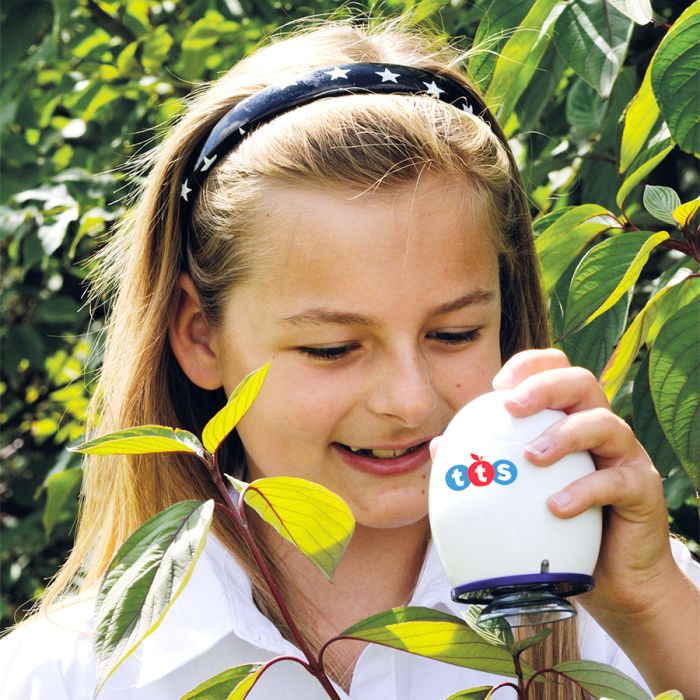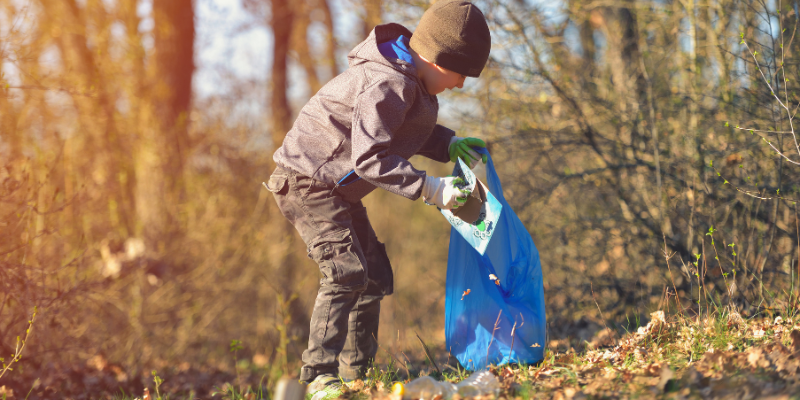Earth Day has grown into a huge global event since its inception in the 1970s. Many of Earth Day’s biggest proponents line city streets for festivals every year to advocate for the preservation of the environment and the planet that we all call home. Earth Day is so popular, in fact, that it's spread to more than 180 countries all around the world—made possible, in large part, by technology that brings advocates together and helps make them more aware of the global ramifications of living on a healthy planet. As such, various Earth Day classroom activities, experiments, and games can create a great opportunity for combining the fun aspect of helping the environment with the critical importance of remembering to go green.
Simple Earth Day Projects with a Big Message
Incorporating Earth Day into a STEM curriculum requires hardly any research or complex planning. In fact, there are probably tons of events going on around your state or town that could help spark a clever idea for the classroom! Eco-friendly STEM projects range from grocery bag improvement to community clean-up or setting up a cafeteria compost. No matter the size, it’s incredibly beneficial and important to introduce kids to these kinds of service projects, especially this time of year.

These projects incorporate more purposeful approaches to problem solving and educators can also easily enhance them by adding STEAM tools. Students can use intuitive products, like the Snap Circuits Green Energy kit, for example, to start learning about the environment. They will get to hone key problem-solving, collaboration, and team-building skills, then apply their knowledge to later learning. Classroom Earth Day celebrations are far-reaching, fun, and beneficial to STEM education!
Earth Day Project Ideas for the STEM Classroom
Earth Day is the perfect holiday for applying both STEAM education and project-based learning. After all, the goal of PBL is using creativity to solve real-world problems. And where are there real-world problems? The environment, of course! Everything from solar solutions to irrigation tactics is a product of critical and creative thinking. Now, it’s time to apply those principles as you celebrate Earth Day with some classroom activities of your own!
There are tons of ways to incorporate environmental education into learning, but here's one of our favorites. Try treating Planet Earth as a patient—something that’s suffering from the various effects of global warming, pollution, drought, and disease—and have students be the doctors seeking a cure. Have them diagnose the planet’s problems and work together to determine the best treatment.

The overall health of Earth has many components, such as carbon cycling, recycling, the water cycle and solar energy. One effective way to illustrate the current state of our environment is by having the students compile an accurate “patient history,” listing the conditions of the planet over certain periods of time and how they have changed for better and worse. In activities such as this, children take an analytical approach to collectively solve problems the Earth is facing.
To figure out a practical solution, however, children first need to apply deeper thinking to uncover the cause. Asking thought-provoking questions guides students down new avenues of thinking and could help to make the treatment process project-based and dynamic. Like all project-based learning, these activities should leave a lasting impression. By employing their own formal and informal research methods, students can see all the various effects of their actions and, more importantly, how they can use collaboration, creativity, and technology for good.
Incorporating MakerEd and STEAM into Green Learning
You could even continue environmental education with STEAM activities that enable students to use their hands for exploring alternative energy, green engineering, life cycles, and more. These tools help foster an appreciation and love for the Earth that will stick with students throughout their lives. Here are some of our favorite solutions to go green with STEAM.

First up, the Terrapin Easi-Scope Digital Microscope helps enable kids to get up close and personal with nature. It is no secret that kids are fascinated by the outdoors. Empty out the pockets of any second grade student, and chances are, you'll find rocks, pinecones, dirt, and maybe bugs. Now, they can also see these treasures in a whole new way. Terrapin's egg-shaped microscope is very easy for kids to hold and also use. Simply connect it to a computer or wireless device and watch everyday objects expand into new worlds to explore. With up to 43 times magnification, you can see the grains on the surface of rocks or the individual hairs on the head of a bee. Seeing the beauty of nature in such intricate detail can fill students with a new appreciation for the world around them.
Once you check out nature's details, keep the outdoor learning going with the versatile Tuff-Bot. Also from Terrapin, this rugged robot combines coding and play, with big wheels that allow it to traverse any terrain. Take it in the woods or on the playground without worrying about its durability or power. Using the Tuff-Bot (Grades 3+), students can program precise movements, like 45-degree turns or commands with up to 256 steps. Also, if you're worried about them getting distracted, screen-free programming helps keep them present in nature with great STEAM learning.

One additional environmentally focused MakerEd product is the Snap Circuits Green Energy kit. Its set of included activities helps kids learn about electricity and energy as they put together safe and interactive circuits. They'll learn about some sources of electricity in their homes or schools, connecting these energy concepts to their own lives. And, they can also explore clean energy sources, like windmills, with the kit's educational manual. How does water store energy? What makes a wind turbine work? How is this energy converted between forms? With 125 different projects, kids can answer all these crucial questions—and more—in an age-appropriate, Earth-friendly way.
Quick Tips for a Greener Classroom
Everywhere, in all aspects of our daily routines, we have the chance to mitigate climate change. In schools, where tons of paper is used (and wasted), it's often beneficial for students to tackle green initiatives in their science classes. Today, there are plenty of technology-enabled resources that they can employ to enjoy an environmentally friendly learning experience.
While going paperless is a great goal, especially with the benefits of hands-on learning, we know printing is often necessary. But there are ways for educators to alleviate the environmental implications of excessive printing. For instance, they can team up with students to create a recycling program. Not only will kids learn the benefits of recycling (and the ramifications of wasting materials and littering), they’ll help the community by engaging in eco-friendly practices and spreading awareness.

Lessons around conservation are a good way to incorporate project-based learning. Educators can assign year- or semester-long projects in which all students measure how much paper they’re using, wasting, and recycling. One teacher also suggested working with the town waste management department to brainstorm better environmental practices—chances are, they’d love to help your kids out! And, of course, reuse every material possible. You can also get children in the habit of conserving products—especially paper. This can spark a dedication to green living by encouraging extended recycling out of the classroom!
How to Make Your EdTech Ecosystem Thrive
Like any ecosystem, the classroom environment needs nurturing and resources to grow and succeed in the wild world of education. Studies show that the people who grow up around technology are more adept at integrating it in their daily lives. Because students spend so much time in their classroom environments, it's essential that the tools they use are those that can equip them for the future. And, most importantly, robust STEAM education helps shape innovators who'll make a difference in their community and the world. Who knows, maybe the person to solve climate change is in your classroom, putting together their first circuit.
If you are interested in tools that will allow your students to thrive in STEAM learning, contact us for a free consultation! Giving students the quality education they need sounds like it might get costly, but don't worry. With Educator Discount programs, students, educators, parents, and administrators can enjoy access to powerful technology at discounted prices. Now, that's an ecosystem for 21st century learning success!
For the latest EdTech, STEM, and 21st century education news, follow us on Twitter and Instagram. Like us on Facebook, too, or sign up for our newsletter for our latest product announcements and offerings. If you have an idea for an Eduporium Weekly theme, send us a message on social media or comment below.



